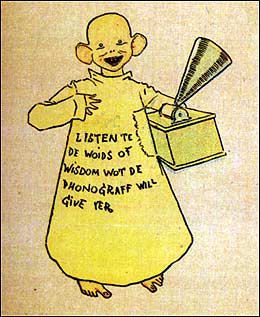2. What is Yellow Journalism?
Yellow journalism, in short, is biased opinion masquerading as objective fact. Moreover, the practice of yellow journalism involved sensationalism, distorted stories, and misleading images for the sole purpose of boosting newspaper sales and exciting public opinion. It was particularly indicative of two papers founded and popularized in the late 19th century- The New York World, run by Joseph Pulitzer and The New York Journal, run by William Randolph Hearst.
It all started, some historians believe, with the onset of the rapid industrialization that was happening all around the world. The Industrial Revolution eventually affected the newspaper industry, allowing newspapers access to machines that could easily print thousands of papers in a single night. This is believed to have brought into play one of the most important characteristics of yellow journalism - the endless drive for circulation. And unfortunately, the publisher's greed was very often put before ethics.
Although the actual practice of what would later become known as yellow journalism came into being during a more extended time period (between 1880-1890), the term was first coined based on a series of occurrences in and following the year of 1895. This was the year in which Hearst purchased the New York Journal, quickly becoming a key rival of Pulitzer's. The term was derived, through a series of peculiar circumstances, from a cartoon by the famous 19th century cartoonist, Robert Outcault called "The Yellow Kid." The cartoon was first published in The World, until Hearst hired him away to produce the strip in his newspaper. Pulitzer then hired another artist to produce the same strip in his newspaper. This comic strip happened to use a new special, non-smear yellow ink, and because of the significance of the comic strip, the term "yellow journalism" was coined by critics.
Critical Thinking:
Here are two examples of articles that use Yellow Journalism. While you read them, think about their differences.
"At 9:45 o'clock this evening a terrible explosion took place on board the United States battleship Maine in Havana Harbor. ...As yet the cause of the explosion is not apparent. ...The explosion took plake while [the sailors] were asleep, so...they can give no particulars as to the cause. Senor de Lome,...ex-minister of Spain to this county,...said that there was no possibility that the Spaniards had anything to do with the destruction of the Maine."
"The Battleship Maine Was Undoubtedly Blown Up by a Torpedo, Hidden Mine or a Sunked Torpedo. Believed to have been the Weapon Used Against the American Man-of-war. The Suspicion that the Maine was Deliberately Blown Up Grows Stronger Every Hour....War Probable If Spaniards Blew Up the American War Ship....Let the Cabinet Soon Avenge the Slaughtered Sailors."
What makes the two excerpts different? Which one is more biased and sensationalist?
Continue
Subscribe to:
Comments (Atom)
